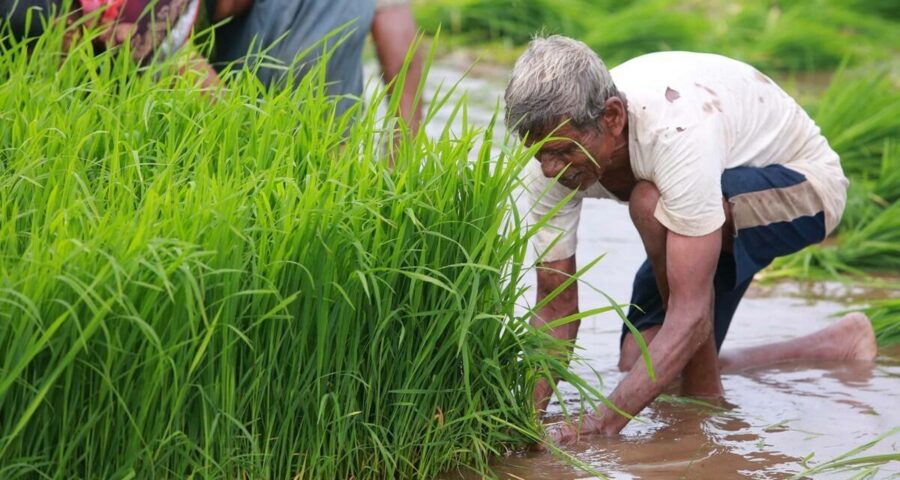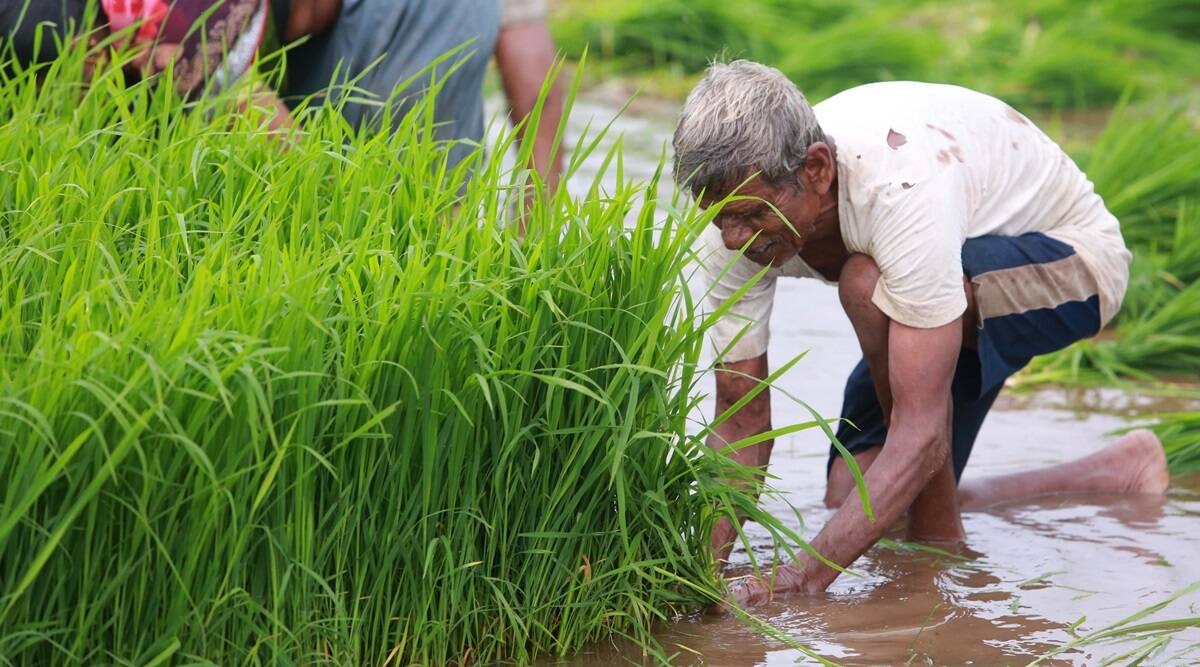“It rained well in the first half of June. But we were advised on DD Kisan channel not to sow, as those rains were due to the Cyclone (Yaas) and wouldn’t last,” says this farmer from Nanhegaon village of Madhya Pradesh’s Narsinghpur district.
Rao Gulab Singh Lodhi planted soyabean on 12 out of his 16 acres on July 11, a day before the southwest monsoon revived after a three-week-long “break” phase.
“It rained well in the first half of June. But we were advised on DD Kisan channel not to sow, as those rains were due to the Cyclone (Yaas) and wouldn’t last,” says this farmer from Nanhegaon village of Madhya Pradesh’s Narsinghpur district. The strong rains on July 12-13 were followed by “rimjhim baarish (intermittent showers)” throughout July.
August, however, has been “poora sookha (totally dry)”. If it doesn’t rain in the next seven days, “my soyabean crop (which has completed flowering and is in early pod formation stage) will fail,” fears Lodhi, who sowed moong (green gram) in his balance 4 acres on August 15. The maturity period for soyabean is 90-94 days and moong about 75 days.
Lodhi’s worry encapsulates the situation for India’s kharif (monsoon) season crop. An extended dry spell from around June 20 to July 11 resulted in farmers missing the main kharif sowing window between mid-June and mid-July.
The monsoon’s revival, though, led to brisk plantings. By July 30, the cumulative area under kharif crops, at 848.15 lakh hectares (lh), was only 4.7% lower compared to the 889.99 lh during the corresponding period of 2020.
This gap has further narrowed (1,064.04 lh versus 1,083.09 lh) as on August 27, according to the Union Agriculture Ministry.
But what is of concern is rainfall in August being 26.4% deficient for the country as a whole. The overall area-weighted cumulative precipitation from June 1 to August 28 has been 9.6% below the “normal” long period average. The crop, whose sowing was already delayed, is currently facing moisture stress. All hopes are on a low pressure area formed over North-west and West-central Bay of Bengal off the Odisha and Andhra Pradesh coasts.
The India Meteorological Department expects this system to bring enhanced rainfall activity over Southern Peninsular India until August 30 and over Central and West India from August 29 onwards.
A quick revival of the monsoon is what Munna Ughreja is also desperately seeking. The 38-year-old from Sultanpur village in Gujarat’s Morbi district has sown cotton on 100 out of his total 200-bigha (80 acres) holding.
On the balance, he has planted groundnut and soyabean on 40 bigha each and sesamum on 20 bigha. On Saturday, Ughreja participated in a rally of farmers from 14 villages of Morbi’s Maliya taluka, demanding release of water into the Maliya Branch Canal of the Narmada dam project.
Gujarat, unlike most other states, recorded deficient rainfall even during July. “We had a good spell in June. But it has hardly rained in the last 72 days, barring a light drizzle early this month. If there are no rains or no release of Narmada water now, our crops will completely wilt,” Ughreja told The Indian Express.
Water from the Sardar Sarovar Dam irrigates some parts of Saurashtra (Morbi, Surendranagar, Botad and Bhavnagar districts) and Kutch (Rapar, Bhachau and Anjar talukas). But given the poor rainfall in the Narmada catchment areas, the Gujarat government has decided to prioritise supplies for drinking water over irrigation.
High prices for crops – especially soyabean and also groundnut and cotton – had made farmers keen to take up sowing this time. Kapas (raw un-ginned cotton) and groundnut are trading at Rs 7,000 per quintal each, way above their respective government-declared minimum support price of Rs 5,726 and Rs 5,500. It’s even better in soyabean, which is quoting at Rs 6,700-7,400 per quintal at Narsinghpur’s Kareli wholesale mandi, as against the MSP of Rs 3,950.
“What use are these prices if there isn’t any crop to harvest?” asks Lodhi. The sentiment is shared by Ughreja. He had sown soyabean for the first time after his groundnut crop suffered damage for two straight years – from excessive rains. “I took soyabean because the price was excellent and it can tolerate excess rains better than groundnut. But my experiment looks like failing,” he admits.
Source: Read Full Article


